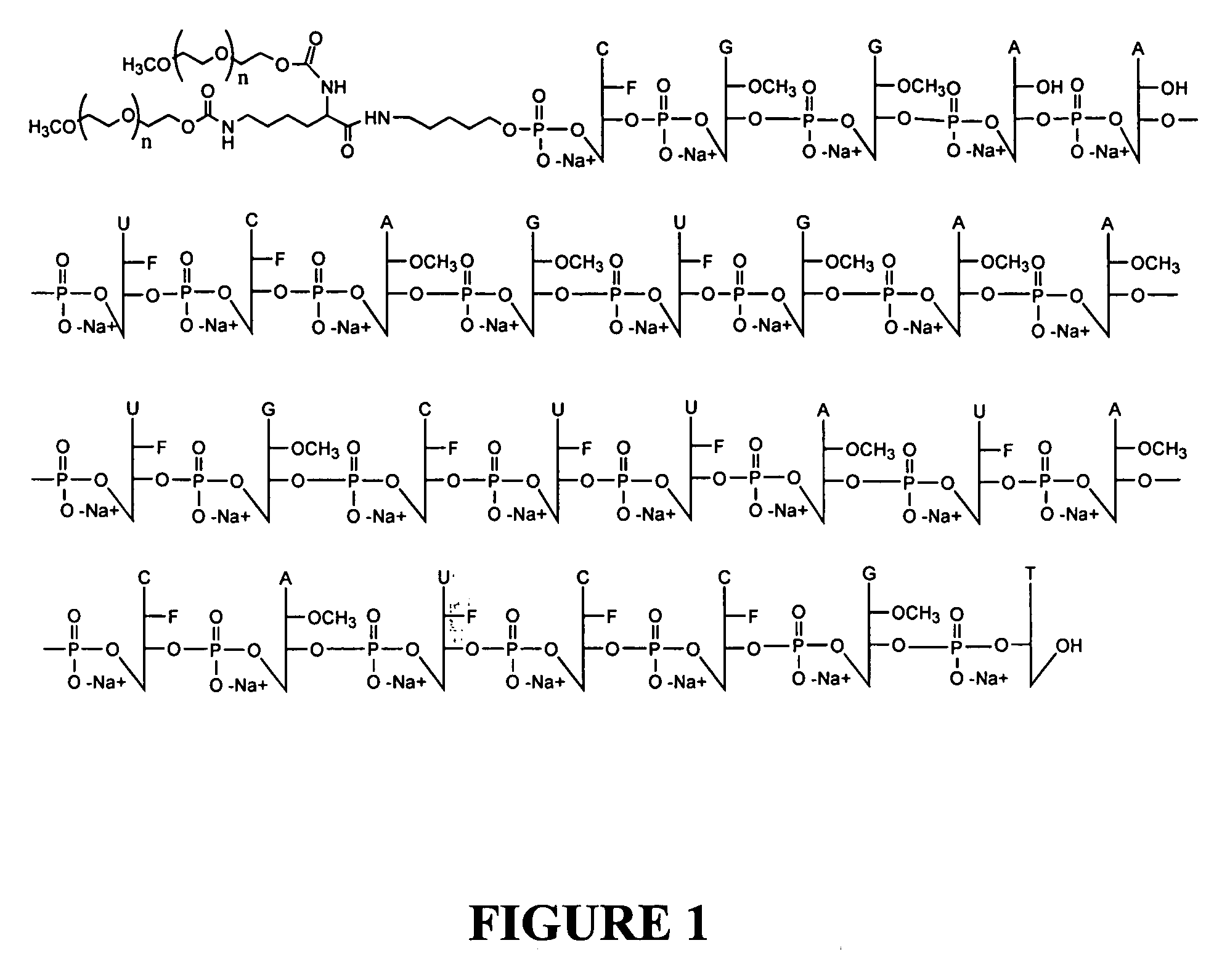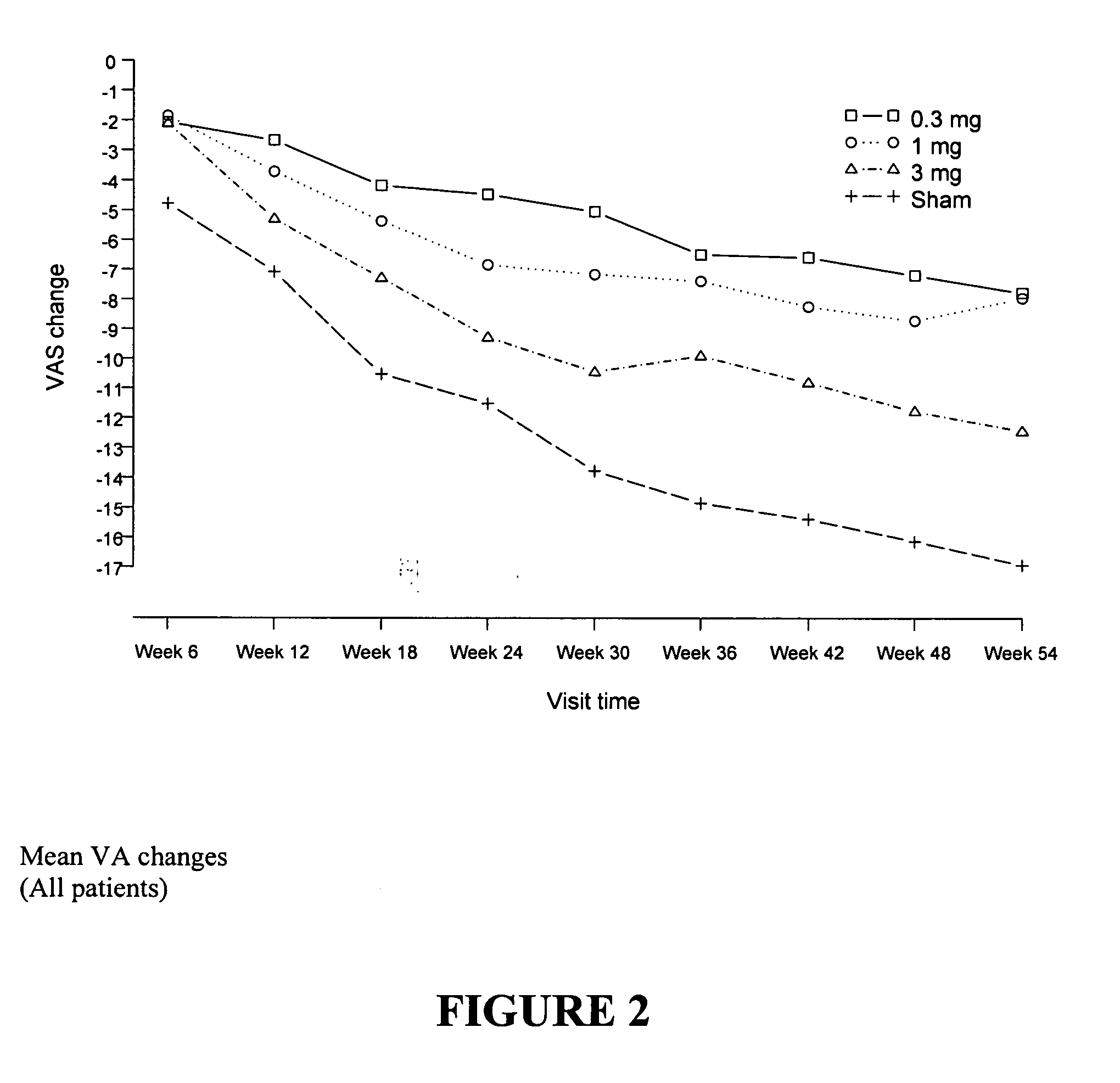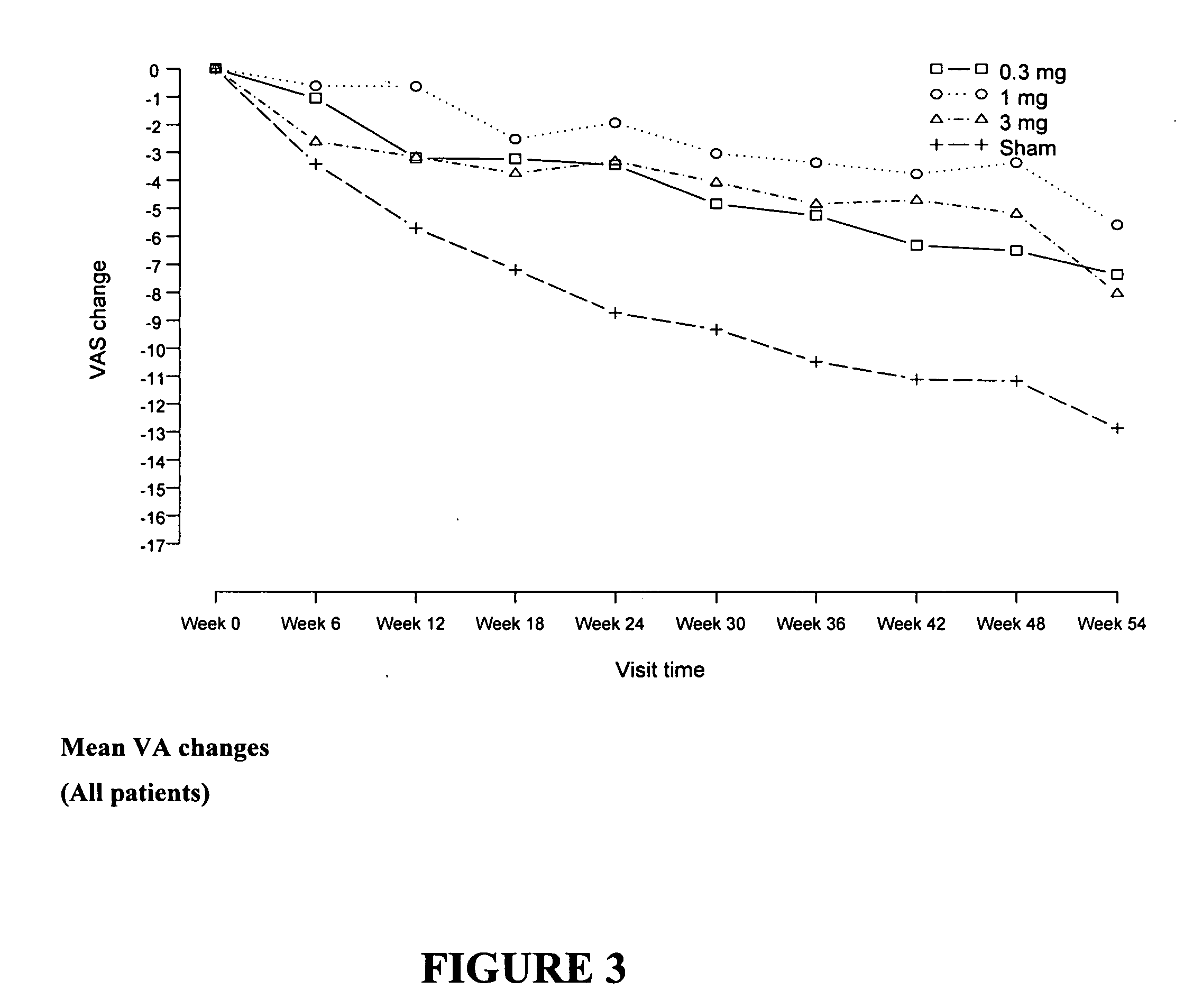Methods and compositions for treating macular degeneration
a technology of macular degeneration and composition, applied in the field of age-related macular degeneration treatment methods, can solve the problems of personal trauma and incapacity, imposing large costs on the society, and significant vision loss, and achieve the effect of low absorption
- Summary
- Abstract
- Description
- Claims
- Application Information
AI Technical Summary
Benefits of technology
Problems solved by technology
Method used
Image
Examples
example 1
[0043] We performed a multi-centered, open-label, dose-escalation study of a single intravitreous injection of EYE001 in patients with subfoveal CNV secondary to age-related macular degeneration and with a visual acuity worse than 20 / 200 on the ETDRS chart. The starting dose was 0.25 mg injected once intravitreously. Dosages of 0.5, 1, 2 and 3 mg were also tested. Complete ophthalmic examination with fundus photography and fluorescein angiography was performed. A total of 15 patients were treated.
[0044] Selection Criteria.
[0045] Patients for the study were selected using the following inclusion and exclusion criteria:
[0046] Inclusion Criteria: Patients were required to be >50 years and in generally good health, have a best corrected visual acuity in the study eye worse than 20 / 200 on the ETDRS chart, and 20 / 400 or worse for at least the first patient of each cohort (n=3); best corrected visual acuity in the fellow eye equal to or better than 20 / 64; subfoveal CNV (classic and / or o...
example 2
[0062] We conducted a multi-center, open-label, repeat dose Phase IB study of 3 mg / eye of pegaptanib sodium (EYE001, an anti-VEGF aptamer) in patients with subfoveal CNV secondary to AMD with a visual acuity worse than 20 / 100 in the study eye and better or equal to 20 / 400 in the fellow eye. If 3 or more patients experienced Dose-Limiting Toxicity (DLT's), the dose was reduced to 2 mg and then 1 mg, if necessary. The intended number of patients to be treated was 20; 10 patients with the anti-VEGF aptamer alone and 10 patients with both anti-VEGF therapy and PDT. Eleven sites in the U.S. were selected for the studies.
[0063] Selection Criteria.
[0064] Patients for the study were selected using the following inclusion and exclusion criteria:
[0065] Inclusion Criteria: The ophthalmic criteria included best corrected visual acuity in the study eye worse than 20 / 100 on the ETDRS chart, best corrected visual acuity in the fellow eye equal to or better than 20 / 400, subfoveal choroidal neova...
example 3
[0099] Pegaptanib sodium drug substance, a pegylated (40 kD) anti-VEGF aptamer (the anti-VEGF pegylated aptamer EYE001) was used. As discussed above, this aptamer is a polyethylene glycol (PEG)—conjugated oligonucleotide that binds to the major soluble human VEGF isoform with high specificity and affinity. The aptamer binds and inactivates VEGF in a manner similar to that of a high-affinity antibody directed towards VEGF.
[0100] The pegylated pegaptanib sodium drug substance was formulated in phosphate buffered saline at pH 5-7. Sodium hydroxide or hydrocholoric acid was added for pH adjustment.
[0101] The aptamer was formulated as 0.3, 1.0 and 3 mg / 100 μl and packaged in a sterile 1 ml USP Type I graduated glass syringe fitted with a sterile 27 gauge needle. The syringe contents were allowed to reach room temperature before use and subsequently administered as a 100 μl intravitreal injection every 6 weeks for 54 weeks.
[0102] Patients were randomized to one of 4 treatment groups (0...
PUM
| Property | Measurement | Unit |
|---|---|---|
| concentration | aaaaa | aaaaa |
| concentration | aaaaa | aaaaa |
| intraocular pressure | aaaaa | aaaaa |
Abstract
Description
Claims
Application Information
 Login to View More
Login to View More - R&D
- Intellectual Property
- Life Sciences
- Materials
- Tech Scout
- Unparalleled Data Quality
- Higher Quality Content
- 60% Fewer Hallucinations
Browse by: Latest US Patents, China's latest patents, Technical Efficacy Thesaurus, Application Domain, Technology Topic, Popular Technical Reports.
© 2025 PatSnap. All rights reserved.Legal|Privacy policy|Modern Slavery Act Transparency Statement|Sitemap|About US| Contact US: help@patsnap.com



